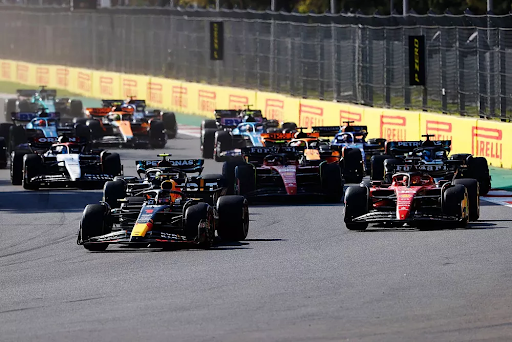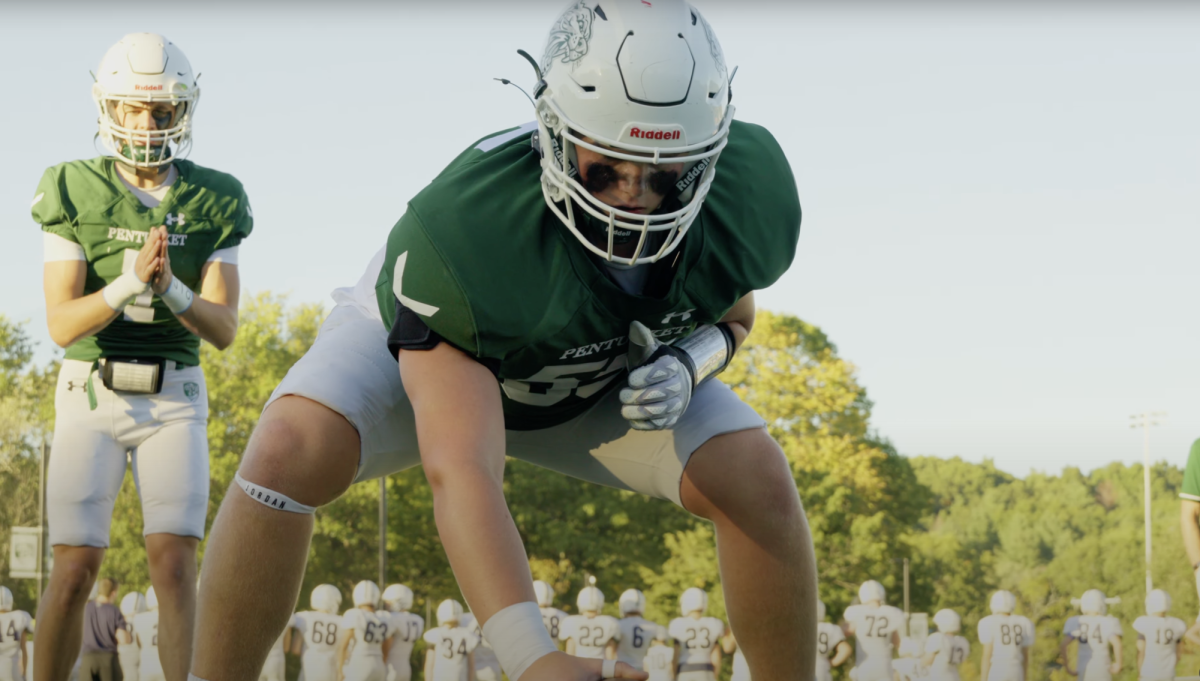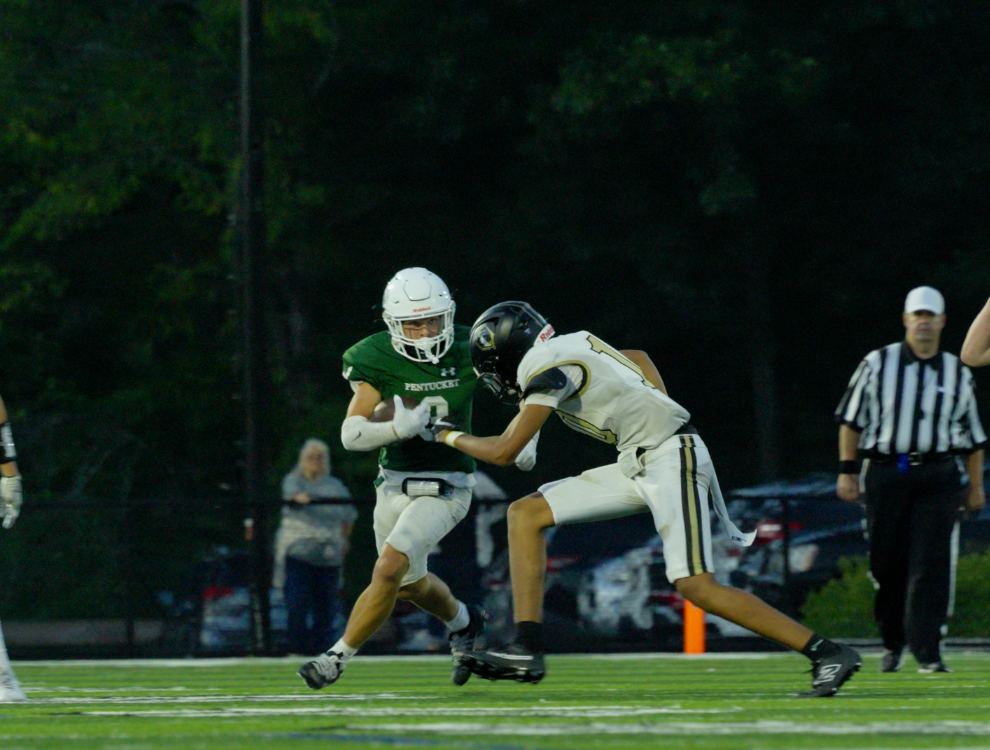Introduction:
What do you consider a sport? You might say that football, soccer, baseball, basketball are sports. What if I told you about a new establishment called Formula One? The viewership of Formula One is the highest among any sport. Racing 24 times across various nations all across the world. Seeing the best of the best drivers in the world drive at an immense pace. Driving to survive. Let’s dive into unexplored territory.
What is Formula 1?
Formula 1 and its total attendance globally for the 2022 season was 5.7 million compared to a 36 percent decrease in 2019. Formula 1 has dominated the American market for the past five years as it has 3 American races: the Miami Grand Prix, the Austin Grand Prix, and the newly introduced Las Vegas Grand Prix. Formula One symbolizes the highest class of international racing in the motorsport community. Formula One is more than just racing around a circuit. It’s a team sport. Behind the 10 teams are engineers, team principals, and hundreds of people responsible for developing fast machines involving aspects like aerodynamics, Chassis development, and engine development. There are also departments within a Formula 1 team that ensure their team arrives at races on time and manages public relations.
For the 2024 Formula 1 season there are 10 teams. You might have heard of some of these teams like Mercedes, Scuderia Ferrari, McLaren, and Astin Martin. All 10 teams compete for the highly esteemed F1 Constructors’ Championship while the 20 drivers; two from each team with a reserve driver compete for the F1 Drivers’ Championship. When teams go into a race weekend it consists of 3 days typically Friday through Sunday. On Friday there are 2 one-hour practice sessions also known as FPI and FP2. Free practice allows drivers to get a feel for the racetrack and get a good balance and feel for the car as teams are always upgrading their cars throughout their season to compete. For the team free practice gives them the perfect opportunity to derive as much data from the cars as possible. They can look for tire wear, optimal balance for the vehicle, race pace to prepare for Saturday, and the ultimate Grand Prix on Sunday.
When Saturday rolls around the third and final free practice is given to teams before qualifying later in the afternoon, qualifying is broken up into three stages Q1, Q2, and Q3. All last 12,10, and 8 minutes. All twenty drivers have one goal on qualifying day and that is to set the fastest lap time around a track. In quarter one the five slowest drivers are eliminated. They will start the race at the back of the grid. Drivers in the back of the grid will have a harder time winning a race as they have to overtake a lot to get to the front of the field. In quarter two another five drivers are eliminated which cements the racing start positions from 11-15. In Q1 the 5 slowest drivers will have positions 15-20. 20th having the slowest lap time out of all the drivers. The ten remaining drivers fight out to set the fastest lap time for the last 10 pistons in front of the grid. The fast driver will take pole position on race day.
Grand Prix Day (Race Day):
Drivers buckle up and team members clear the grid before the formation. Drivers do a formation lap before the race starts. This is where you will see cars weave across the track to warm up their tires as they get into formation. As the red lights are out drivers push their physical limits off and force out the maximum performance of the vehicle. On a typical race day, a race lasts 80-100 minutes but with delays like red flags and crashes, the race is most likely to last over 2 hours long. Point distribution for the Drivers’ Championship is as follows.For the Constructors Championship since each team has two drivers the points of both drivers are added together for the Constructors championship.
| Grid Position
1st 2nd 3rd 4th 5th 6th 7th 8th 9th 10th |
Points Awarded
25 18 15 12 10 8 6 4 2 1 |
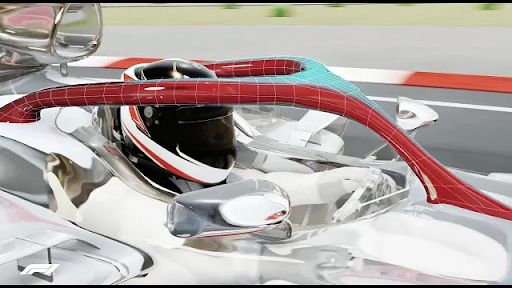
Dangers of Formula 1:
This sport with all the amusement that it offers to fans comes at a stark cost to drivers and their safety. The average speed of a Formula One car is 200 mph. Crashing in regular cars is fatal but imagine crashing at supersonic speeds. The amount of g-force put on the body during impact can kill you. The picture above is one of the most important safety elements within a racing car known as the halo which was introduced in 2018. It consists of a bar to protect the driver’s head from facing head trauma or being ejected from the car. All drivers must wear a fire-resistant racing suit. The FIAs also require drivers to get out of the car in a matter of seconds.
Romain Grosjean Crash:
On November 29th, 2020 Grosjean escaped death at the Bahrain Grand Prix. The French driver on the opening lap of the race made contact with AlphaTauri’s driver Daniil Kvyat. He crashed into a metal barrier at a high speed breaking the barrier and his whole car split in half. The car was engulfed in flames. Fans who were once cheering and drivers who were driving stopped. A once bustling circuit turned into pure quietness within seconds. A miracle happened. He was able to free himself from the constraints and get out of the cockpit. He was escorted into an ambulance and was brought to the hospital. He suffered a few injuries like minor burns and a sprained ankle despite the visuals of the crash.
CRASH VIDEO LINK (NOTE: VIEW AT YOUR DISCRETION).
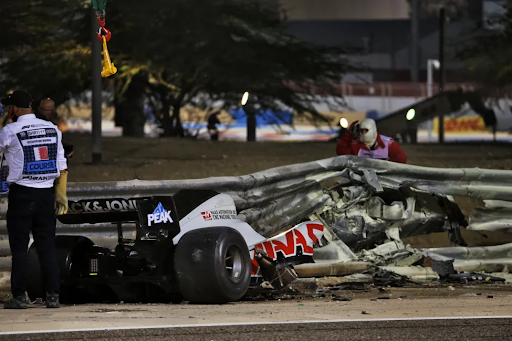
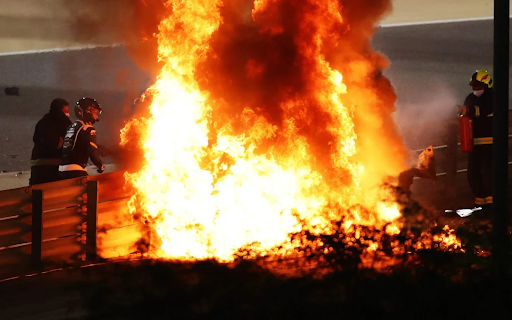
Tire Compounds:
There are generally 4 different types of tires every racer can use. Depending on the team’s racing and the driver’s preference can dictate what tires are put on through the race. Drivers are required to have a minimum of one pit stop each race. Soft tires give you the best grip and the best performance of the car but the wear on these tires are quicker, only lasting 20-30 laps. Medium compound tires are slower than soft tires but last 20-40 laps before needing a w set of tires. Hard tires give you the least amount of grip but allow you to race for longer periods before going into the pits. They last 40-50 laps. Blue tires also known as rain tires are used when it is running and when there are damp tract conditions. A pitstop in Formula One lasts 2-3 seconds.
Red Bull Racing’s Dominance In Formula 1:
To understand Red Bull’s dominance it’s important to acknowledge what this term means in Formula One. In this case, it means a secular Formula One team that is consistently winning all races of the calendar and ultimately winning year after year in both championships. Mercedes had their dominance from 2014-2020 with Lewis Hamilton. Before that, there was Red Bull Racing from 2010-2013 with Sebassitan Vettal. Before that was Ferrari with Michale Suhmacker from 2000-2004.
The (FIA) or Federation International of Automobiles is the governing body of Formula One. After 202 there were rule changes to the sport. Rule changes happen every 3 to 4 years. Starting in 2023 the FIA had the goal to make overtaking easier for cars. They changed how teams could design car parts that interacted with aerodynamics. When a Formula One car passes it has a big hole. If you are the car behind you get less grip because there is less air to push your car down around corners and various parts of the track.
Red Bull Racing’s dominance has to do with engineering. When engineers construct a car they look to prioritize two aspects which are downforce and drag. Downforce is when air pushes down on the car. Cars that help with downforce include the front and back wings and the floor of the car. Downforce helps give the car a lot of grip to go through corners efficiently at high speed. Increasing downforce gives you the tradeoff of increasing drag. Drag is the horizontal force of the air phishing back the car. There is a trade-off between these two comments. Teams must engineer their cars for peak performance around all the circuits in the calendar.
How do you get the best aerodynamic balance? By having high downforce with minimal drag. All eyes point to the undercarriage of the car. The floor of the car manipulates the air pushing the car down like a suction cup. Ultimately Red Bull Racing made the best-engineered car and explained their dominance.
Interview With A Senior (Chaney Goldstein):
What are your thoughts on Formula One and motorsports in general?
I enjoy Formula One and other motorsports as it’s intriguing to see the ten different teams from all over the world compete on different tracks around the world every couple of weeks. It’s fun to watch both the on and off-track races between drivers and teams to get to the top of the standings every year. I started watching after playing the F1 video game when I then realized that it was a real racing series.
When it comes to the question of if motorsports is a sport do you consider it a sport?
As an individual, I consider motorsports a sport as it involves people and teams competing at their highest level to win a championship. Motorsports follow the same fundamental concepts as any other sport in existence.
Do you think funding teams and the influence of money play a bigger role in motorsports than say sports like football, baseball, or soccer?
Depending on the motorsport series (e.g., Formula 1 vs IndyCar), money can either be everything to the sport or a lot less of a factor. In Formula 1, money is one of the biggest factors in everything. While there was a cost cap implemented in 2021 to limit a team’s expenditures to $135 million per year, this does not solve the issue of smaller teams having less funding than the bigger teams such as Red Bull, Ferrari, Mercedes, etc. This difference in funding can impact the engineering and development of a car and the staff and driver contracts that teams need to organize yearly. In a spec series such as IndyCar, funding is less of an issue as all of the cars are more or less the same, except for the aerodynamics. This means that funding for a team plays a much less of a key role in how those teams work and while throwing more money at a problem might fix it, some racing series try to level out the playing field to give all constructors (teams) a chance.
How would you describe the dangers of motorsport racing?
The dangers of motorsport are generally more severe than those of another sport as you have professional drivers moving at speeds of at least 150 MPH depending on the sport. Formula 1 cars can go 215 MPH and IndyCars are not much further behind at around 205 MPH. Like any sport, there are accidents, and motorsport has had its fair share of fatal accidents over the years. Because of this, it is the responsibility of the governing bodies of these motorsport organizations to find ways to make their cars safe and since 2016, safety has been one of the biggest priorities of most governing bodies such as the FIA, the governing body of all of the Formula series’ and many other international motorsport championships. The introductions of innovations, such as the halo on Formula 1 cars, are designed to keep the drivers as safe as possible from collisions with others, driving into a wall, cars flipping upside down and cars going on top, the list goes on true scenarios where the halo has protected a driver. Additionally, the cockpit of a car has an impact rating to protect the driver if the rest of the car gets destroyed and the drivers wear a flame-retardant suit to protect themselves from fiery crashes, such as Romain Grosjean in Bahrain 2020.

